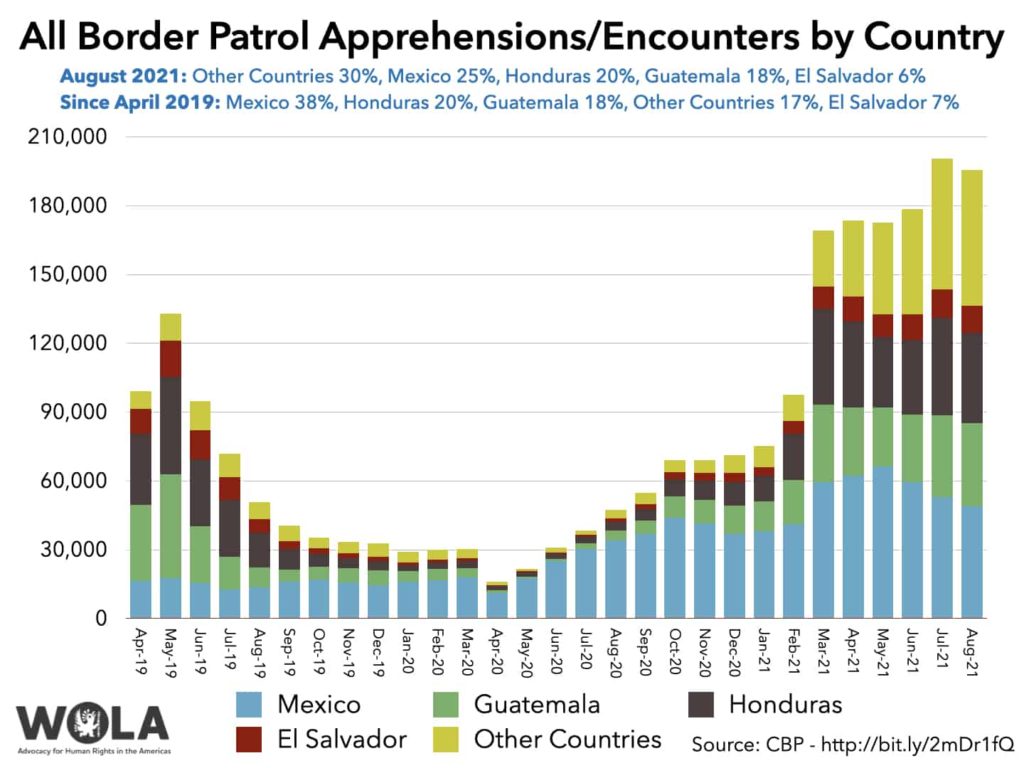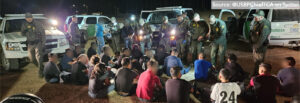The recent images of Border Patrol officers, on horseback, chasing down Haitian migrants with what appear to be whips, are repugnant. As Rep. Barbara Lee (D-California), a leading congressional voice on Haiti and recipient of the 2021 WOLA Human Rights Award, tweeted earlier this week:
The photos & footage of U.S. Border Patrol’s disgusting mistreatment of Haitians at the southern border are deplorable.
This abuse not only contradicts American values, it bring us back to a time where this imagery was commonplace & Black people were treated as less than human.
— Rep. Barbara Lee (@RepBarbaraLee) September 21, 2021
Anti-Black racism is an insidious force that exacerbates the violence and denial of resources experienced by Afro-descendant migrants. The shocking abuse and lack of adequate shelter seen at the Texas border is a microcosm of what Black migrants face as a matter of course, as documented in a report released this year by the Black Alliance for Just Immigration.
The continued use of Title 42 to expel thousands of Haitians to their home country—after a devastating earthquake, increased political instability following the murder of President Moïse in July, and just months after the Department of Homeland Security extended the Temporary Protected Status humanitarian program to Haitians in the United States due to “serious security concerns, social unrest, an increase in human rights abuses, crippling poverty, and lack of basic resources”—is unconscionable. As the head of the UN Refugee Agency, Filippo Grandi, highlighted, sending Haitians back without screening for protection concerns may violate international law; just last week a U.S. federal judge also ruled that the Title 42 provision is illegal.
We need a migration system at the border that values and respects lives, and addresses racism and discrimination against Black and Indigenous migrants and asylum seekers.
We need a migration system that is orderly and predictable—not so underfunded and rickety that it’s easily overwhelmed, leaving migrants under a bridge for days and officials scrambling, as seen this past week in Del Rio. It is in the interest of both migrants and border officials to make this orderly system possible.
We need a migration system at the border that doesn’t result in grim images of cruelty and chaos, but images of:
- Those who’ve fled their home in order to survive, being promptly admitted at ports of entry. There, they can approach personnel and apply for asylum, without having to hire smugglers who specialize in border crossings.
- Asylum seekers getting meals, showers, and a place to sleep in warehouse-like processing facilities. In the meantime, over the course of a day or two, staffers, including specialists in family welfare, file paperwork, take down data, check criminal backgrounds, and test for any health conditions or illnesses.
- Case officers picking up the phone and knocking on doors, ensuring that asylum seekers attend their court dates and have access to needed services. With these and other alternative-to-detention programs, there is no need for abusive, squalid, and far more expensive confinement under Immigration and Customs Enforcement’s (ICE) detention system.
- Migrants seeking economic opportunities, filling out forms for guest worker visa programs in their countries of origin and reformed programs that address past abuses in this system.
- Actions by Congress to preserve family unity in the immigration system, as was proposed in Biden’s immigration bill, including by allowing more discretion in deportation cases and mechanisms to permit deported family members to be able to return to the United States. That way, these individuals are not forced to take the dangerous and at times deadly journey through U.S. borderlands to reunite with their U.S.-based family members.
These images should be lawful, orderly, and utterly unlikely to go viral.
There’s chaos and cruelty at the border right now. It doesn’t have to be this way.
The U.S. government can pursue commonsense policies that would bring these images one step closer to reality:
- Re-adapt what migration processing looks like.
- Fix the badly broken U.S. asylum system.
- Work with Mexico as a partner, not pressuring Mexico into becoming a wall of deterrence, detention, and abuse.
- Partner with Central American countries to address migration’s root causes.
Join the Beyond the Wall Campaign
Track the news and data that matters: sign up for weekly U.S.-Mexico border updates.
One reason why what’s happening at the border right now is so unique: this past August, about a third of the migrants encountered by Border Patrol were from countries other than Mexico or Central America’s Northern Triangle (El Salvador, Honduras, and Guatemala). That’s never happened before—it’s indicative, in part, of how COVID-19’s economic fallout is driving up migration.
 WOLA is tracking these trends in weekly news summaries about major developments at the U.S.-Mexico border.
WOLA is tracking these trends in weekly news summaries about major developments at the U.S.-Mexico border.
Sign up for the Beyond the Wall campaign to receive these weekly data visualizations, contextualization of what’s happening, and news link round-ups in your inbox every week. Explore the archive here.
Subscribe for weekly border updates
Parts of this text were adapted from WOLA Director for Defense Oversight Adam Isacson’s blog post, “Order at the Border,” and WOLA’s Beyond the Wall campaign materials.


